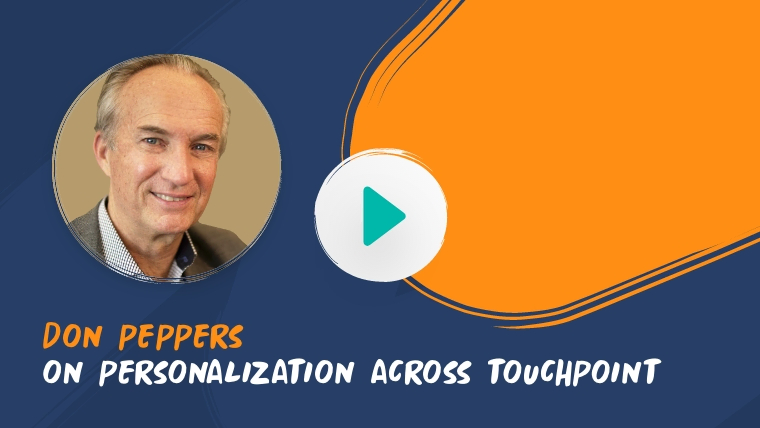For too long, businesses have been stuck at the surface level of personalization — adding a customer’s name in email marketing or reminding them of a product they’ve viewed. That approach, where personalization is geared toward selling more, misses out on opportunities to build meaningful connections by engaging each customer with a unique journey from end to end. This includes all customer touchpoints, not just the top of the sales funnel. Research shows consumers are more likely to buy more, more often, from companies that consistently personalize their experiences.
Defining a personalized experience
Personalization means treating each person as an individual. It means knowing who they are, when possible, every time they interact with your company — in online or offline channels. It’s meeting them wherever they are on their journeys. It means understanding why they’re interacting with your business and predicting the next-best action for serving their needs in real time. It’s answering their questions and knowing what they need or want — even before they ask.
If this is the goal, companies still have a long way to go. Organizational silos, a lack of consolidated data and analytics, a culture oriented around product value and the absence of orchestration between technologies all create clunky experiences where customers feel as if they’re not being listened to.
There’s a major transformation underway. And digitalization and AI can help. They’re bringing faster and deeper customer insights, supporting the shift from reactive customer service to proactive customer engagement, and intelligently orchestrating individual components of customer interactions to create those end-to-end experiences.
Technologies such as AI can improve the top and bottom lines at the same time. For example, machine learning algorithms can predict a unique customer’s future behavior, such as their likely pattern of spending after a complaint was satisfactorily resolved. The precision that AI technologies provide in understanding and engaging with customers also drives down the cost to serve.
Customers teach you how to serve them the way they want to be served. This is knowledge that only you have. Your competitors aren’t privy to this insight.
Competitive dynamite
Personalization offers a powerful competitive advantage if you use it to create what Martha Rogers and I call a “learning relationship.” Each time a customer interacts with you, you learn from the interaction and apply that learning to future interactions. Customers teach you how to serve them the way they want to be served.
This is knowledge that only you have. Your competitors aren’t privy to this insight. If you use that information to improve the experience across all your customer journeys, it builds nearly unbreakable loyalty while improving efficiency and eliminating friction in all your interactions, reducing the cost to serve. Few customers are going to want to leave such an ultra-personalized experience and start over with a competitor.
In our customer relationship model — identify, differentiate, interact, customize — “customize” is the payoff step. It’s a level of personalization that provides a nearly impregnable competitive advantage, one customer at a time.




